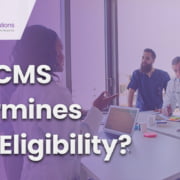How to Avoid Penalties in MIPS 2018, 2019 and Beyond?
Back in 2018, the American Medical Association (AMA) stated that the only way to avoid penalties regarding MIPS 2018 was to report on a few of the MIPS quality measures.
Now, that we are about to conclude 2019, reporting PI and IA are deemed crucial aspects of MIPS 2019 reporting. Eligible Clinicians (ECs) have the right to bonuses from the $500 million pool set aside in 2019 if they score more than 75. In this way, ECs get to avoid negative payment adjustments waiting to happen in 2021 by a distance.
Until now, the four approved performance categories to attest to include:
- Promoting interoperability
- Quality
- Improvement activities
- Cost
How Reporting Criteria Changed Over Time?
Eligible clinicians can avoid the penalty by following a reporting strategy as per AMA’s advice. In 2017, physicians needed to score at least three MIPS points to avoid a penalty. It means that they only needed to report one quality measure to overcome the penalty risk.
Nevertheless, now the rules are stricter and the focus on value-based services is now more than ever. With this advancement and the modified requirement criteria in the healthcare industry, the new threshold for MIPS 2018 reporting is fifteen points. The clinicians having a score of 15 can avoid penalties in 2020. As ECs, if you fail to report the minimum amount of quality measures governed under the Quality Payment Program’s specifications, it results in a definite 5% decrease in reimbursements.
Therefore, scoring equal to 15 is essential for those eligible in this program.
The tips below can help you avoid a financial penalty in 2020 and 2021 and a chance at a high Composite Performance Score (CPS)
Report on Improvement Activities (IAs) to Score Higher
The best way to meet the required threshold is to report Improvement Activities (IAs) immediately.
The Centers for Medicare & Medicaid Services (CMS) defined 113 measures under this performance category in MIPS 2019. Each performance measure has further subcategories in the form of medium and high-weighted activities. The high-weighted activities carry more points and can get you closer to the maximum score.
Similarly, MIPS 2019 has 118 Improvement Activities from which clinicians have to select and submit. It is a constant process of reporting for 90 days. Let’s be compliant with P3Care because we can get you the right combination of medium and high weighted measures to score in the 80s or above.
How do You Calculate Performance Categories?
The activities for the performance categories function around care coordination, population healthcare, beneficiary engagement, and health equity factors. To score in any category, eligible clinicians are required to collect and submit data for 90 consecutive days in 2018.
How to Submit MIPS to the CMS?
Healthcare providers can submit clinical data for MIPS 2018 via:
- Quality payment program 2018 (QPP) data submission system
- Electronic health record (EHR) system
- MIPS qualified registry
- The qualified clinical data registry (QCDR)
Improvement Activities – Small Practices Have an Edge
Reporting Improvement Activities (IAs) under MIPS 2019 can improve revenue cycles of small practices. The program rewards small healthcare practices with double the points as compared to well-established healthcare facilities.
Another advantage of smaller practices is a bonus of five extra points when they score a total of 15 points. It ranks them above the others on the MIPS scorecard with 20 points. Therefore, if you report for one high-weighted improvement activity, you are bound to earn more points.
For the same MIPS score, ECs working for large medical practices must submit data for two or more improvement activities to get up to the threshold limit of 15 points.
MIPS Quality Measures Shield You from Negative Payment Adjustments
Negative payment adjustments can be a big setback for your profit journey. Therefore, use quality measures wisely and promptly. To stay on top of your game, you must fully understand the performance measures to make to turn it into a lucrative opportunity.
There are 275 quality measures and clinicians can select from among them the most suitable measures to meet the MIPS 2018 threshold score. Each Quality measure has further sub-categories as per the following factors:
- Efficiency
- Outcome
- Patient engagement
Moreover, CMS has developed a specialized set of quality measures to help physicians identify appropriate quality measures. Clinicians can report data for 12 months on six quality measures. However, one of the quality measures must be an outcome measure or a high priority performance measure.
Clinicians participating in the form of virtual groups can use CMS Web interface or Consumer Assessment for Healthcare Providers and Systems (CAHPS) for the MIPS survey.
Report At Least Two Performance Categories in 2018
To stay away from negative payment adjustments, report at least two performance categories. For instance:
- Improvement Activities and Quality
- Or, Promoting Interoperability and Quality
Report One of the Categories in 2019
Even though you have to report in one of the categories in 2019, but there are certain criteria set for each category. For instance, small practices with 15 or fewer clinicians, when they are reporting solo or as a group will have to attest to 1 high weighted and 2 medium-weighted improvement activities. That’s one example. And, the list goes on.
Call us to discuss more on our toll-free number: 1-844-557-3227.
Score Comparison
Ordinarily, we see small medical practitioners reporting one medium-weighted improvement activity and one quality measure. This reporting tactic earns you 10 points and with an extra 5 bonus points, you may achieve a total of 15 points. This was back in 2018.
Now, you need a score of 30 points to avoid penalties.
Promoting Interoperability (PI)

Another way to earn 50 out of 100 points is by reporting on the Promoting Interoperability performance category. It investigates the patient and physician engagement level and makes the patient information available to other clinicians via EHR technology. ECS is required to submit data for 90 days or more on the base score of four or five measures in this category. The base score measures take their value from the certified EHR edition.
Large medical facilities can achieve high scores by reporting on PI and quality categories. However, they must report on the PI category to score 50 and two quality measures to get to 70 points and target the bonuses out of a $500 million pool.
In 2019, the score to achieve bonuses moves up to 75 and beyond.
EHR Technology – One Step Ahead
Each EHR edition has a different set of performance measures. For instance, the 2014 EHR edition allows reporting on the Promoting Interoperability Transition Objectives and measure set.
Tricks of the Trade
The data submitted on quality measures for at least 20 patients fulfill the data completeness requirement.
Two medium-weighted improvement activities and four quality measures can get you a score of 16 points in 2018.
It is only possible when the physicians earn 12 out of 70 points in the “Quality” performance category and score 20 out of 40 points in the Improvement Activities.
Vote for Better Healthcare
As 2018 is about to end, the evergreen slogan for the welfare of Americans is to vote for a better healthcare system. That truly goes in favor of the Americans.
If you still haven’t done anything to avoid the penalty in 2020, it is time to connect with a reliable MIPS registry for submissions. America needs you to come out as a winner and a reputable practitioner.
Most of the performance categories require data for 90 days. Therefore, reach out to P3Care and report QPP measures efficiently and be free from the worries of non-reporting.

















What strategies can clinicians and healthcare providers implement to avoid penalties in MIPS (Merit-Based Incentive Payment System) for the years 2018, 2019, and beyond?